The Queens of Egypt
In ancient Egyptian times, men had most of the power. And even though it was part of the Royal Wife’s duty to produce as many heirs as possible, sometimes she achieved co-regency and ruled the land. Many people can name Nefertiti and Cleopatra as ruling queens of Egypt from the past, but in fact, there are several more that deserve mention along the Queens of Egypt timeline.
The Ruling Queens of Egypt
While the wives of Egyptian Pharaohs were, without a doubt, powerful and highly regarded, few women achieved the status of sole rulers of Egypt. Although some went to great lengths to strengthen their claim to the throne, they all played significant parts in the ancient Egyptian history.
Queen MerNeith
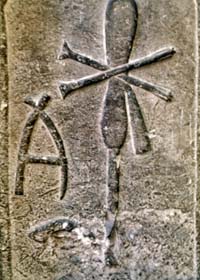
Scholars are divided as to whether or not Queen MerNeith ruled over Egypt during the First Dynasty of Egypt around 2920 BC. Even though her name is not present in a seal impression as other kings of the first dynasty and there is no mention of her on king’s list, she is believed to have risen to power after the death of her husband, King Djet.
At the time, her son, Den, was too young to rule Egypt and so Queen MerNeith (meaning “beloved by Neith”) became the very first female ruler of ancient Egypt. Some historians, however, believe she was simply co-regent with her son.
Queen Neithikret
At the end of the Old Kingdom and the beginning of the First Intermediate Period, Queen Neithikret likely rose to power circa 2148-2144 BC. Although little is known about Queen Neithikret, also referred to as Nitiqret and Nitocris, she is mentioned in many historical writings.
Queen Sobekneferu
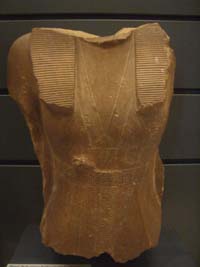
Meaning “Sobek is the beauty of Ra”, Queen Sobekneferu ruled Egypt during the 12th Dynasty from 1806-1802 BC. She rose to power after her husband (and brother) Amenemhat IV, died. The queen built structures at Herakleopolis Magna, and also continued the funerary complex of Amenemhat III.
There are headless statues (damaged) of the queen in the Delta. She was also known to use masculine names in addition to her feminine titles. Many scholars believe that she used masculine titles to help assuage the many critics of female rulers.
Queen Hatshepsut
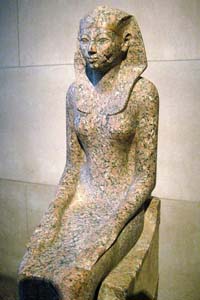
Queen Hatshepsut holds the title of the longest reign of a female ancient Egyptian ruler. She lived from 1500-1458 BC and ruled over Egypt for 21 of those years. As a fully royal woman, her less royal half-brother married her to secure his right to the kingship once his father (Thutmose I) had died. Her brother (and husband), Thutmose II rose to kingship only because three of his older brothers died prematurely.
Hatshepsut went to great lengths to become queen of Egypt. She used her bloodline and concocted a story about being co-regent with her father, Thutmose I. The Royal Steward, Senemut, named her, “God’s Wife, King’s Daughter, King’s Sister, Great Royal Wife Hatshepsut” in an inscription at Aswan. She also claimed that her father declared her his heir before he died.
To further instill the idea in the ancient Egyptians’ minds that she was no less a king than any other, she dressed up in men’s clothing and wore a false beard. She also insisted that people address her as “King” and “His Majesty”. She is known for her peaceful reign and for the building of many monuments, including the mortuary complex at Deir el-Bahri.
Click here to discover more about Queen Hatshepsut
Queen Nefertiti
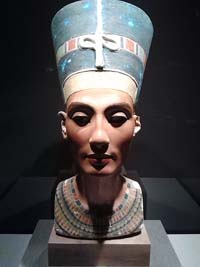
Nefertiti is known as one of the most beautiful and powerful queens of Egypt. Her name means, “The beautiful one has come”. She was born around 1370 BC and likely died around 1330 BC. Although Great Royal Queens are expected to give birth to a son, she gave birth to six daughters.
Nefertiti played a key part in the cult of Aten, and was a priest during the Amarna period. The cause of her death is unknown and though it is likely she perished from plague or natural death, it’s possible she may have been murdered because of her scandalous religious ideals.
Click here to discover more about Queen Nefertiti
Queen Twosret
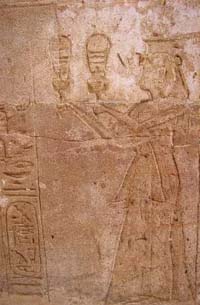
Queen Twosret was married to Seti II. When the king’s died his son, Siptah, took over the throne. However, Siptah was a sickly boy and unable to rule Egypt effectively. Twosret, still owning the title “Great Royal Wife”, took over co-regency with Siptah.
However, it is likely that a Syrian by the name of Bay was the actual ruler of Egypt at that time, behind the scenes. When Sipta died six years into his reign, Twosret took over as sole ruler of Egypt for two years, when her reign was cut short by civil war.
Queen Cleopatra
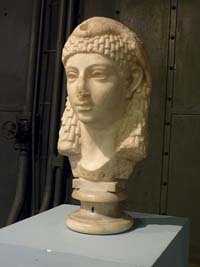
Although there were several Cleopatras, the most famous was Queen Cleopatra VII Philopator. Born in 69 BC, Cleopatra had two older sisters who eventually seized control of Egypt. Their father, Ptolomy XII, regained power and when he died, Cleopatra married her twelve year old brother, Ptolemy XIII.
Ptolemy XIII became King and Cleopatra started a co-regency with him. After much drama, conflict and romance between Egypt and Rome, she committed suicide at the age of 39. Cleopatra was the last ruler of Egypt before it became a Roman province in 30 BC.
Click here to discover more about Queen Cleopatra
Other Famous Egyptian Queens
Queen Nefertari
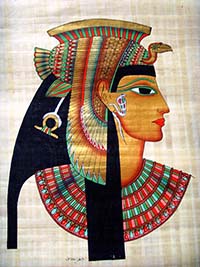
Queen Nefertari was the Great Royal Wife of Ramses II. Because she was highly educated, she played a great part in diplomacy during Ramses' reign. Her importance to the pharaoh cannot be underestimated. He built her a luxurious tomb in the Valley of the Queens, and there is evidence of the romantic relationship between the two in the many ways Ramses himself addressed her (e.g. "The one for whom the sun shines").
Ramses II honoured his queen by building a temple dedicated to her and goddess Hathor at Abu Simbel, where Nefertari is portrayed in statues of the same height as the pharaoh (an unusual practice in ancient Egypt).
Click here to discover more about Queen Nefertari
Queen Ankhesenamun

Ankhesenamun is best known as the wife of King Tut, the "boy king". Although they were both very young when Tutankhamun ascended to the throne of Egypt, preserved depictions showed them in a loving, romantic relationship.
Queen Ankhesenamun's story wasn't all as cheerful though. Her two daughters were stillborn (likely due to genetic disorders, as she was Tutankhamun's half-sister). She was married (perhaps by force) to both her father, Akhenaten, and her grandfather, Ay.
Ay is also believed by some to have plotted against King Tut, or played a part in his murder. This theory has not been confirmed. He did manage, however, to legitimise his claim to the throne by marrying his granddaughter. One of the last records of Ankhesenamun might be correspondence with the Hittite ruler, in which she wrote she was "afraid". This also has yet to be confirmed, although the fate of the queen is unknown.
Click here to discover more about Queen Ankhesenamun
Daily Lives of The Ancient Egyptian Queens
Unlike other ancient cultures, the ancient Egyptians had respect for women, especially those with royal power.
The wives of pharaohs were not called queens, they held titles such as “Great Wife,” “Great Royal Consort,” and “God’s Wife.”
The daughters produced by these marriages were royal princesses. Princesses, however, didn’t inherit their father’s throne. Instead, the throne, upon the king’s death, was passed down to a son of (preferably) the Great Wife, or, if necessary, one of the secondary wives.
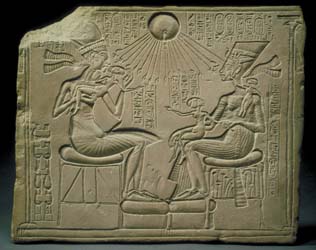
© MCAD Library - Akhenaten, Nefertiti and
their daughters
Just as beauty and youth is important today, it held high importance in ancient Egypt. Females depicted in tombs and inscriptions were always portrayed as young and beautiful, despite their age. Also, similar to modern day, the ancient Egyptians took excellent care of their appearance. They had good hygiene and good grooming habits, and also enjoyed wearing makeup, exquisite clothing and even wigs.
Perfume and toiletry items have been found in tombs. Hairy bodies were not considered desirable among ancient Egyptians, and so the wealthy often shaved their bodies and their heads. They bathed frequently in a soda mix solution and used henna to dye their body, nails and hair. Royal women always had female attendants on hand to help them with their daily grooming rituals.
Egyptian Queen Attire
Egypt is known for its heat. So people, including the ancient Egyptian queens, dressed for the heat to keep cool. Queens were fond of wearing linen tunics and put them on by stepping into them. Queens also wore a petticoat (skirt) and cape. Unlike the commoners, queens wore colorful, embroidered linen. Beads were often added to clothes and “nets” of them were worn over the queen’s necks to look like part of their dress.
Egyptians dyed leather to wear as shoes and belts. Robes called kalasaris were worn draped over one or both shoulders. Some of these robes had sleeves and others didn’t, and some started at the neck while other started just below the breast. These robes usually included a skirt that touched the ankles and were cinched with a belt.
Click here to discover more about Fashion in Ancient Egypt

© Simon Cope - Depiction of Queen Ahmose-Nefertari
Egyptian Queen Tombs and Mummies
- In 1900, William Petrie an English Egyptologist discovered the tomb of Queen Merneith at Abydos in Tomb Y. She was buried near her husband, King Djet, and her son, Den.
- Queen Sobekneferu was possibly buried in Mazghuana, but this remains uncertain to this day.
- Queen Hatshepsut built her own mortuary complex at Deir el Bahri. Recently, scans of her mummy have revealed that she suffered from diabetes and arthritis.
- Joan Fletcher, Egyptologist, recently proved that a mummy found in KV35 in the Valley of the Kings is in fact the mummy of Queen Nefertiti.
- Queen Twosret’s tomb is KV14 in the Valley of the Kings which is also the tomb of Seknakhte, the Pharaoh that succeeded the queen.
- Queen Cleopatra’s tomb remains a mystery. It is believed to be located somewhere near Alexandria, Egypt, likely along with the remains of her Roman lover, Mark Antony.
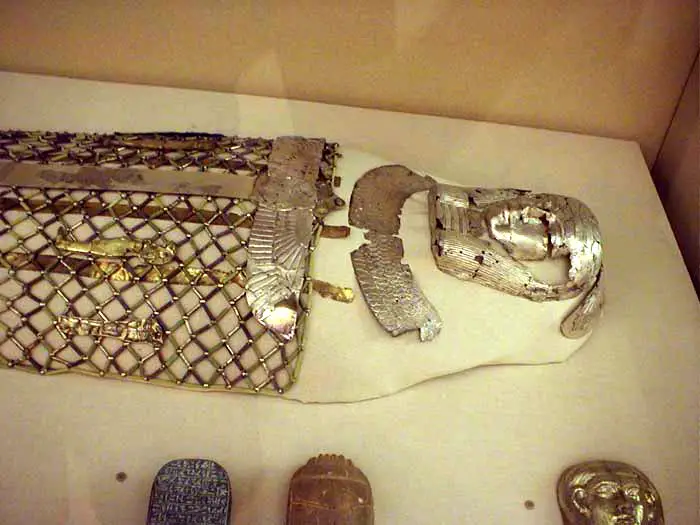
© Andrew Kuchling - Queen Mernua Mummy Trappings
Ruling Egyptian Queen Facts
- Queen Hatshepsut reigned longer than any other female in Egypt. Her reign lasted for more than 20 years.
- Queen Hatshepsut dressed as a king and wore a false beard to assert a masculine authority to appease the public and those who did not approve of a female ruler.
- Some believe Queen Nefertiti, wife of the Pharaoh Akhenaton, was the driving force behind the “one true god” religion centered around Aten.
- Cleopatra is also known as “The Queen of the Nile” and was not of true Egyptian descent, she also had Greek lineage.
- Ancient Egyptian women and queens alike were allowed to own property and hold high official positions. They could inherit wealth and defend their rights in a courtroom.
- Queen MerNeith was buried with 50 servants, indicating her great power as an Egyptian ruler.
